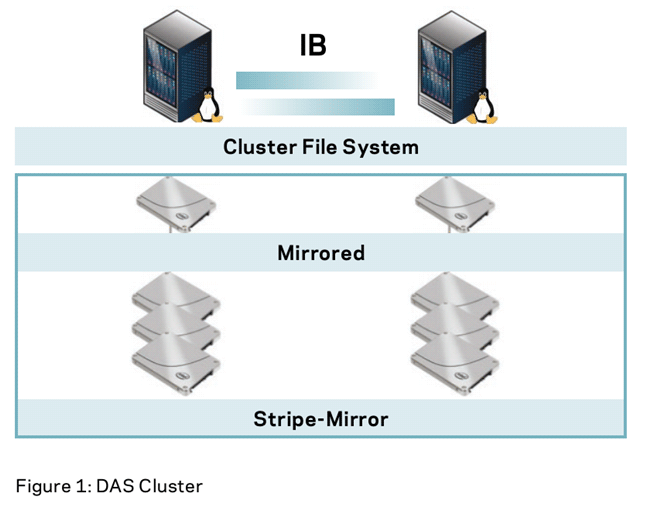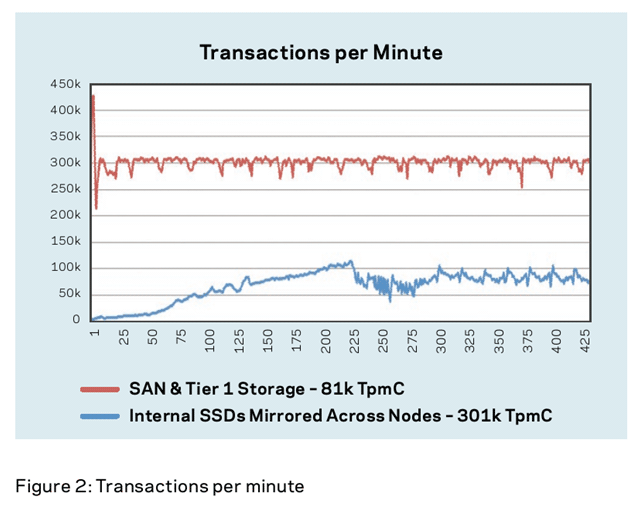Veritas InfoScale Foundation
'Increase your storage utilization, efficiency, and availability'
Overview
Veritas InfoScale™ Foundation is specifically designed for an enterprise’s edge-tier, departmental, and test/development systems. InfoScale Foundation combines industry-leading Veritas™ File System and Veritas™ Volume Manager technologies, and delivers a comprehensive solution for heterogeneous online storage management while increasing storage utilization and enhancing storage I/O path availability.
Reduced complexity and increased efficiency
If an IT organization is locked into a single storage vendor, it is likely that they are paying a premium for storage. By fully virtualizing connectivity from the host to storage, InfoScale Foundation increases data center agility and provides flexibility in choosing a storage vendor. A storage administrator benefits by being able to choose the type of storage hardware that best suits the organization’s needs, knowing that the multipathing driver on the host either already supports that storage hardware or can easily be enhanced to support it. InfoScale Foundation supports more than 1,000 different storage array models from all of the leading vendors.
Ensuring optimal I/O performance in virtualized environments is an ongoing challenge. InfoScale Foundation enhances I/O performance by distributing requests across all available paths according to pre-defined load balancing policies. An administrator can select between multiple policie depending on the characteristics of the I/O workload, SAN layout, and performance needs while keeping systems online.
Administrators may also apply configuration and tuning templates to ensure consistency across multiple VMware?ESX? servers.
Increased storage utilization
InfoScale Foundation enables administrators to improve storage utilization and capacity management across heterogeneous operating systems and storage hardware. InfoScale Foundation enables storage virtualization across edge-tier workloads, whether there are multiple volumes within a single server or volumes that span and are visible to multiple servers. Physical disks can be grouped into logical units (LUNs), and volumes are dynamically sized and resized to improve disk utilization and help eliminate storage related downtime. This improves storage utilization and sets the stage to move data seamlessly between different operating systems and storage arrays and to spread I/O across multiple paths to improve performance.
Supported systems
- Operating systems—Windows?, Linux?, IBM? AIX?, VMware ESX, Red Hat? Enterprise Linux, Oracle? Solaris SPARC Unix, Oracle? Enterprise Linux (RHEL compatible mode)
- Replication—Hitachi TrueCopy, HP Continuous Access XP, HP Continuous Access EVA, EMC? SRDF?, EMC RecoverPoint?, EMC? MirrorViewTM, NetApp? SnapMirror, IBM? Metro Mirror, IBM? Global Mirror, IBM? HADR, IBM? XIV?, Oracle? Data Guard, and others
- Storage—EMC?, HDS, IBM?, NetApp?, HP, Dell? Compellent,and others
Veritas™ Flexible Storage Sharing
A “shared nothing” or hybrid approach
Overview
Veritas InfoScale™ enables customers to take their distributed, high performance, and highly available file systems and combine them with the latest storage and networking technologies with its Flexible Storage Sharing (FSS) feature. Flexible Storage Sharing allows customers to unlock the true potential of Direct Attached Storage (DAS), without sacrificing performance or availability to drive up to 4x the performance at less than 20 percent of the cost of a traditional Storage Area Network (SAN) environment. FSS is not limited to a “DAS-only” deployment but can be used in conjunction with SAN in a hybrid deployment allowing the existing SAN hardware to also be used.
The Storage Cycle
Enterprise class storage, like many other businesses, is cyclical.
New cycles are generally kicked off by either massive innovation or a major limitation in the existing resources. In the 1990’s as networks increased in performance, storage increased in capacity, and the data center exploded with data and applications, the Storage Area Network (SAN) slowly phased out the purpose built machines of the early data centers.
SANs became the best, and default, means to meet the storage, compute, and availability needs of the majority of applications run in the enterprise.
The next cycle in data center architectures, which brings the storage back to the server, is under way. The re-introduction of DAS as enterprise storage started in some of the largest Internet companies that provide an extraordinary amount of data blindingly fast. And while these companies have different audiences and uses, one commonality is the relative lack of traditional SAN storage in favor of software controlled DAS and scale-out computing. By combining faster DAS, in the form of Solid-State Drives (SSD), with faster networking, increased computing power, and more advanced software, data centers can realize the same benefits of shared storage without the complexity and cost of typical SAN environments.
What is Flexible Storage Sharing
Flexible Storage Sharing is built into the core components of InfoScale Storage and seamlessly combines shared and direct-attached storage under a common storage virtualization solution. Flexible Storage Sharing allows server administrators to “export” any disk to any node in the cluster, providing a “shared nothing” architecture. With Flexible Storage Sharing, Server Administrators can quickly add storage or compute nodes, or both, to an existing cluster.
A key driver in the DAS revival is the increasing adoption of SSDs due to their higher performance and reduced latency capabilities compared to spinning disk. To take more advantage of these characteristics, enterprises are putting SSDs directly inside the server to bring the storage as close to the compute as possible. However moving to internal SSD introduces challenges around data availability and disaster recovery as the storage is now “locked” into a single node, rather than being shared and protected within the SAN.
Flexible Storage Sharing removes these barriers to in-server solid state by enabling full redundancy and high availability of both data and applications with the full data management, optimization, and disaster recovery (DR) capabilities within Cluster File System. Flexible Storage Sharing also takes advantage of remote direct memory access (RDMA) capabilities introduced in Storage Foundation 6.1. Using RDMA with high bandwidth interconnects, such as 10 gigabit Ethernet or InfiniBand, enables near-local read and write performance to and from remote disks. The faster bandwidth enables full control of the storage layout to meet needs around resiliency (mirroring) or speed (striping) to provide complete performance flexibility.
Any existing SAN infrastructure is not rendered redundant as a result of adopting FSS. Instead, SAN storage can be incorporated within the FSS shared pool in a hybrid deployment allowing continued use of legacy hardware.


Higher Performance and Lower Cost
The combination of Flexible Storage Sharing, Solid State Drives, and RDMA brings a full storage management stack to the server administrator, removes the need for SAN storage, and provides full flexibility for a server based approach to storage management. Using high performance storage and interconnects, Flexible Storage Sharing enables application owners to move from redundant to performance focused architectures, and switch between mixed and read-only workloads, all utilizing the same system hardware. Flexible Storage Sharing can be configured for:
- A fully redundant OLTP configuration that gives 4x the performance at 20 percent the cost of Tier-1 SAN.
- A high performance OLTP configuration that gives 6x the performance at 15 percent the cost of Tier-1 SAN.
- A fully redundant data warehouse (DW) configuration that reduces query times by 50 percent, completes 5x the queries per hour at 11 percent the cost of Tier-1 SAN.
OPEX Improvements
When you examine the numbers above, they include completely different workload and data protection capabilities. When working with traditional storage, what’s the effort to add additional performance capabilities? How quickly and easily can data and applications be protected in case of a disaster?
With Flexible Storage Sharing all of the above results were achieved on the same set of hardware, software and infrastructure components. The capabilities as a full storage and application management system allows Veritas™ Cluster File System full control of performance and availability through standardized, intelligent software. With Flexible Storage Sharing, server and application administrators can use software to tune their applications based on their service and performance level agreements rather than require long, complex architectural planning and implementation. Veritas Cluster File
System and Flexible Storage Sharing enables software based:
- Addition of Storage or Compute Nodes
- File or Volume based replication
- Fast-failover of mission-critical applications
- Storage optimization through tiering, de-duplication,and compression
